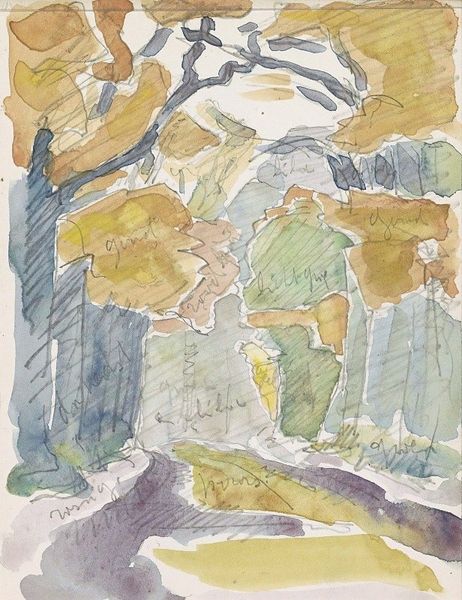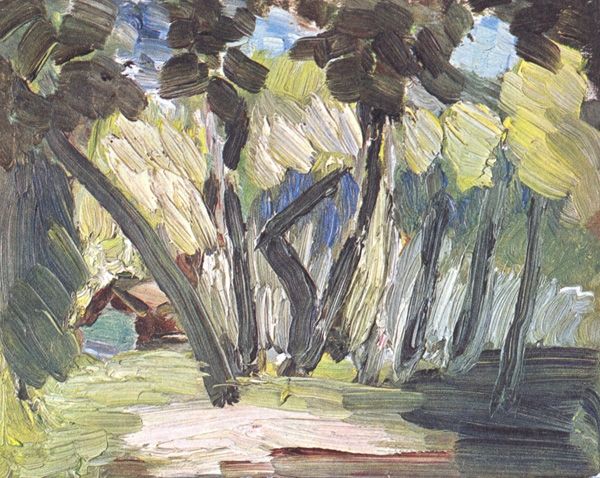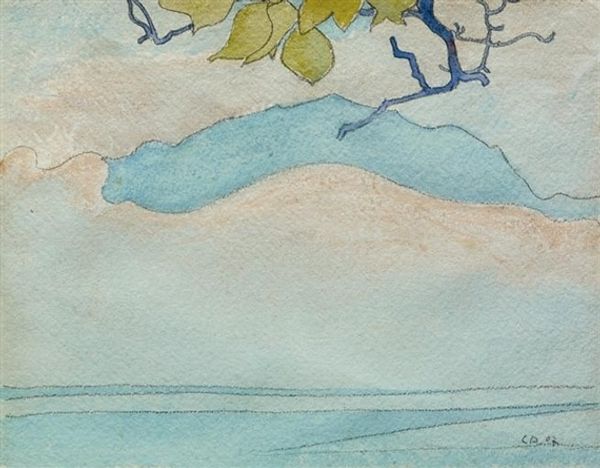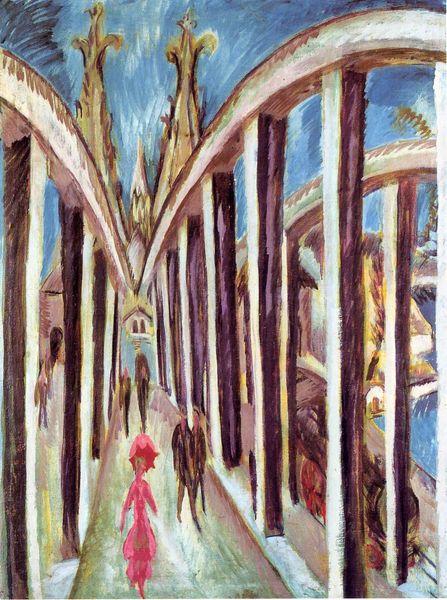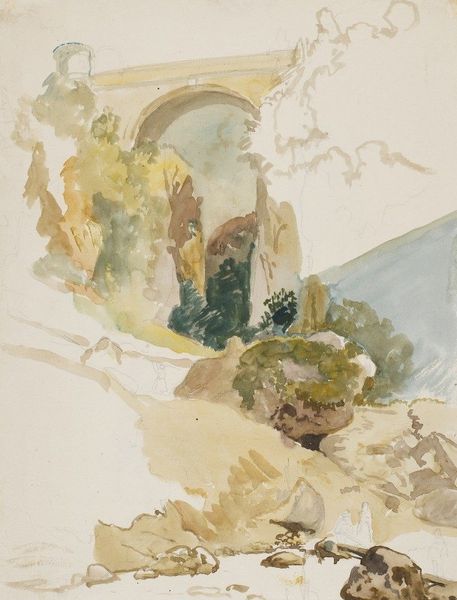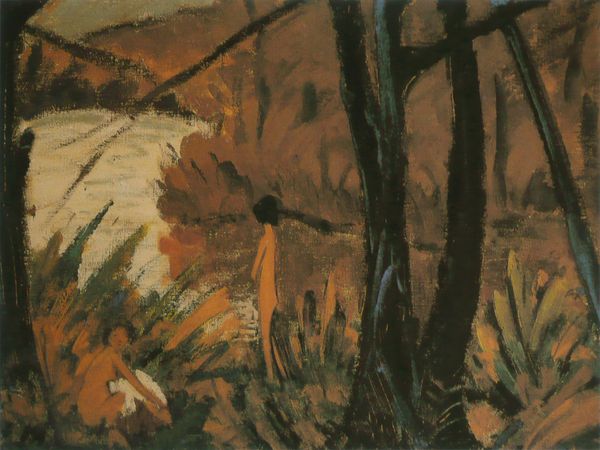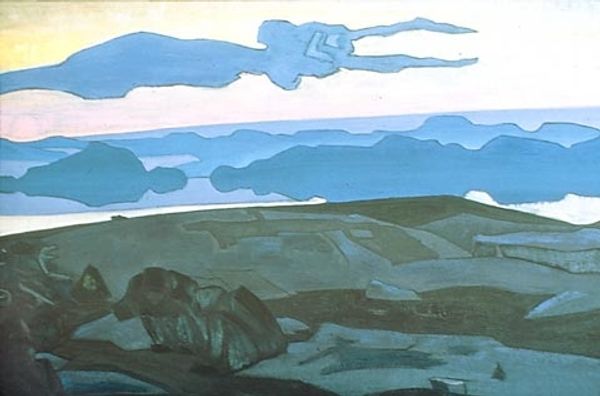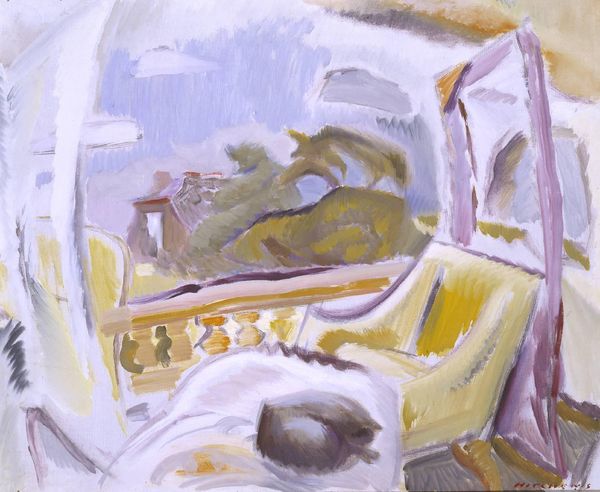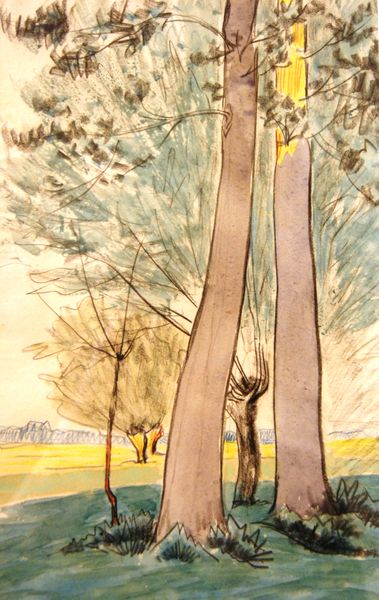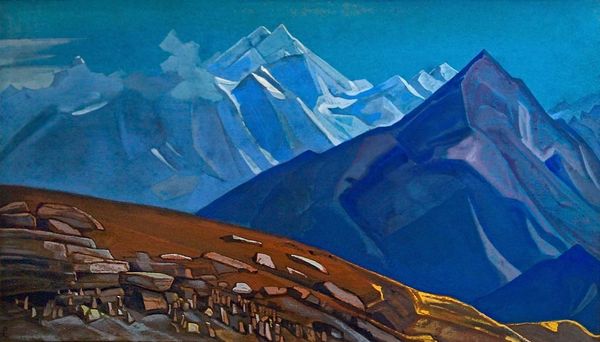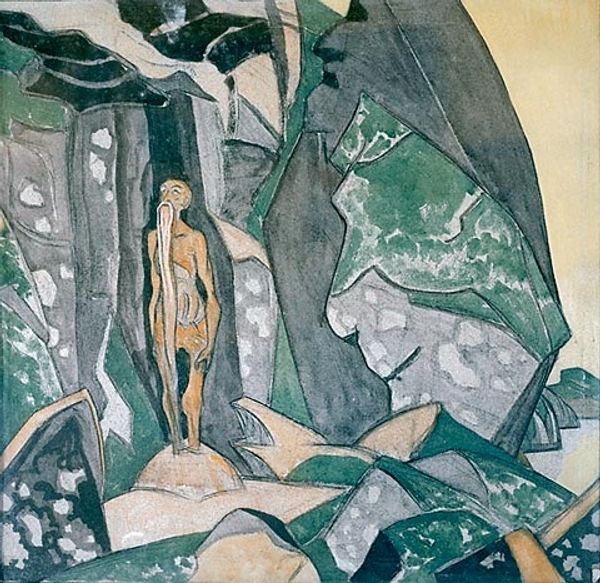
Dimensions: 73.5 x 117 cm
Copyright: Public domain
Curator: This piece immediately feels like a memory, or a dream half-forgotten. The colors... such blues and golds melding, bleeding into each other. Like twilight given form. Editor: That’s a lovely way to put it. What you are describing speaks to Roerich’s use of symbolism to convey spiritual ideas. This is “Laozi,” painted in 1924. The artist, Nicholas Roerich, worked with watercolor and tempera on canvas to render this evocative scene. Roerich was deeply inspired by Eastern philosophy and spirituality and this piece obviously nods to that influence. Curator: The central figure... the man atop that... yak? It's as if he’s a part of the landscape himself. The flowing lines, the muted palette—everything whispers of tranquility and inner peace. There is a sense of complete serenity as the path dissolves and disappears, taking us to an invisible space beyond words. Editor: And let’s talk about the figure for a moment: Laozi, the founder of Taoism. Note how Roerich portrays him journeying through the mountains, accompanied by what appears to be a water buffalo. A vehicle often associated with Laozi. It is more than a landscape, but also a complex allegory reflecting his teachings. He left society to contemplate in nature, as he went towards simplicity. We might also observe here an endorsement for the decolonization of art to free imagination beyond borders and religions. Curator: Exactly. And I love the feeling of almost otherworldly nature, as if it has not yet been completely explored. Editor: Yes, Roerich masterfully synthesizes Eastern motifs and spiritual quests within a modern artistic framework. This speaks, perhaps, to universal desire for enlightenment, represented across cultures and temporalities. It's about the individual in harmony with their environment, the dissolution of boundaries... Curator: ...and perhaps it is a reminder that, on the grand scale of existence, our personal narratives, all the drama of our small world, it all diminishes like these faint trails in nature before a landscape. Editor: A compelling testament to art's power in rendering the immaterial, in giving visual form to philosophies. It makes us think how Laozi´s journey connects with social responsibilities to find better path towards nature.
Comments
No comments
Be the first to comment and join the conversation on the ultimate creative platform.
